Challenge: What do you do when you have several contented clients who love their existing boat, but would just love a little more protection from the elements?
Solution: You close it in by tooling up a hardtop, of course.
The new CSB Huntsman Explorer has come as a result of many contented CSB Huntsman Crusader owners wanting just a little more protection from the Kiwi weather patterns, at the same time enabling them to extend their boating season.
This challenge was discovered by Geoff Robinson, designer and managing director of CSB Huntsman Boats, who insists on keeping in touch with his retailers and Huntsman owners, discussing what they like about their boats and what they would change if they could. This has happened throughout the CSB Huntsman range and is how the present models have evolved – for example, the popular 5.5m Dorado has now been released as a third-generation model.
Unfortunately, it is not just as simple as adding a hardtop to an existing model, as there are structural, balance and weight issues that must be considered to ensure the performance of the boat is not overly affected.
With the Crusader being such a popular choice among its owners, Geoff felt the market proven 6.5m Crusader hull and deck to be the obvious place to base the design and build of a new 6 – 7m hardtop, the first in the CSB Huntsman range.
Within the new hardtop, the full bodied Explorer offers very generous space for a boat of its length. The added internal volume has been made available by the lack of need for side decks, thanks to the walk-thru centre windscreen within the hardtop, which provides the access to the foredeck. While out on the water I found the access forward to the deck easy. We simply closed the sliding cabin door, (which has the access steps built into it) flipped up the air stay supported centre screen and easily climbed through. With no side decks, Huntsman has been able to push the useable interior space right out to the full width of the boat.
With the lockable cabin door open there is wide access to the forward fully lined cabin; again the cabin has been pushed out to utilise the full width. A large V-berth quickly changes into a large double berth by the insertion of a squab infill. There is good storage space available along side shelves that run the length of the cabin area. There is a centre infill squab which covers an area suitable for a portable toilet.
The small cabin windows, combined with the Maxwell overhead access hatch and good cabin headroom there was little risk of claustrophobia setting in. The hatch also provides good ventilation and further access to the foredeck.


While looking for vantage points for photography purposes, there were a couple of occasions where I needed to exit and board via the bow, this added a challenge and a little excitement at times; easily fixed though – a bow ladder would be a worthy investment if you were to board regularly via the bow.
Both when standing and when seated at the helm, the hardtop offered great protection from the sun and wind, and cold conditions in the winter – although open at the rear in the depths a canvas backdrop will ensure the crew remains warm and dry within.
Although the hardtop has no head lining or coverings there was no annoying reverberation nor was there any moisture experienced from swirling back-drafts.
The skipper’s seating is in the form of a swivelling Springfield pedestal seat, which is adjustable forward and aft as well as up and down – great for skippers of differing sizes and shapes. Standing headroom was generous and visibility was excellent through the New Zealand made Seethru glass windscreen. The sliding side windows offer good ventilation; lift the centre windscreen when stationary and you have excellent airflow throughout the cabin area.
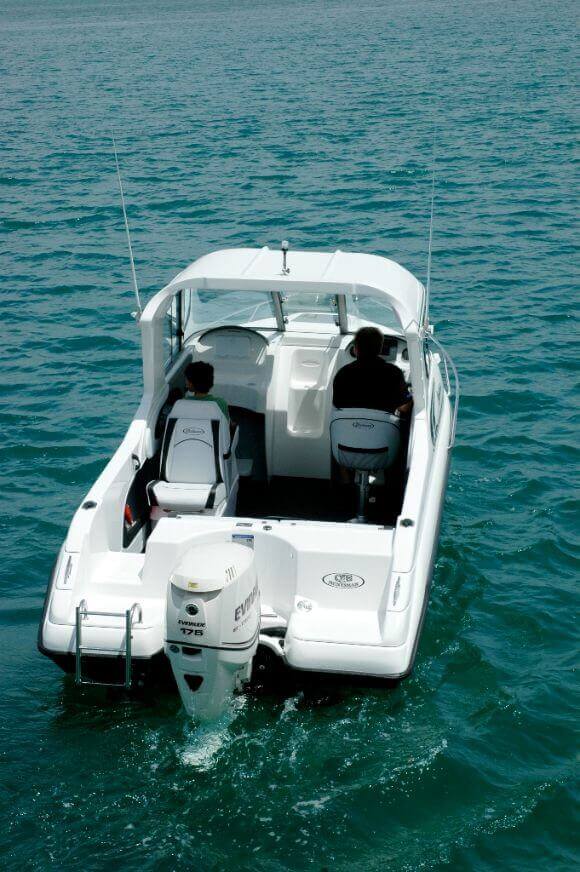
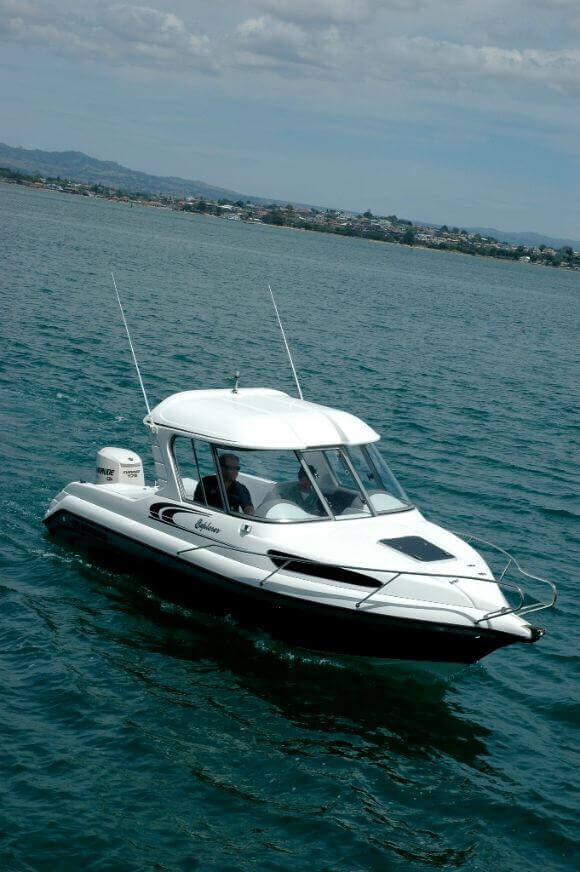
Instrumentation is easily viewed and uncluttered, the dash easily providing lodgings for the GME CD stereo system, a GME VHF, the Evinrude I-Command engine gauges which flank a GX 600 Lowrance GPS chart plotter sitting proudly centre, with more room for a drink holder, switch panel and trim tab controls. There is a comfortable footrest, which is repeated on the passenger’s side – if your legs are long enough to reach it. The passenger side has a good-sized glove box and drink holder.
The other seating is a ¾ rear bench seat aft. And a king/queen seat to the port, I felt the seat had been fixed a bit too far back, making it a little too far back from the bulkhead footrest and slightly cluttering the walk-thru entrance to the cockpit – easily remedied by moving the king and queen seat unit forward.
Deep toe kicks run along the edge of the cockpit, allowing fishermen to get right up close against the coamings when the action hots up. Also for the fisherman is the option to remove the marine carpet which covers the cockpit sole. Along each of the cockpit sides, there are deep pockets for storage and racks for rods, a smaller additional shelf for storage located above. The high deck coamings offer a sense of security – particularly for those with younger family members.
There is more storage just forward of the 150-litre underfloor fuel tank by way of a large wet locker, which drains into a deep sump along with any other excess water from the cockpit, where a bilge pump is ready and waiting.
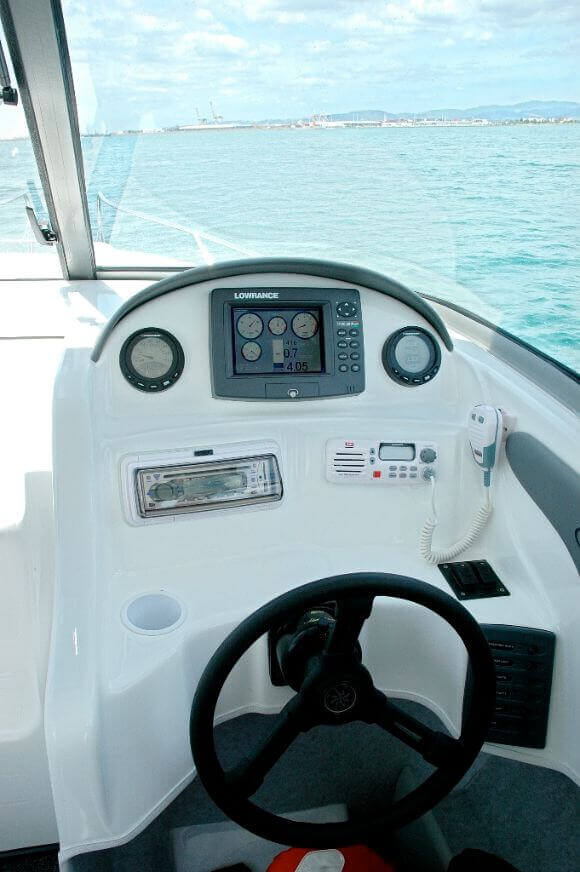
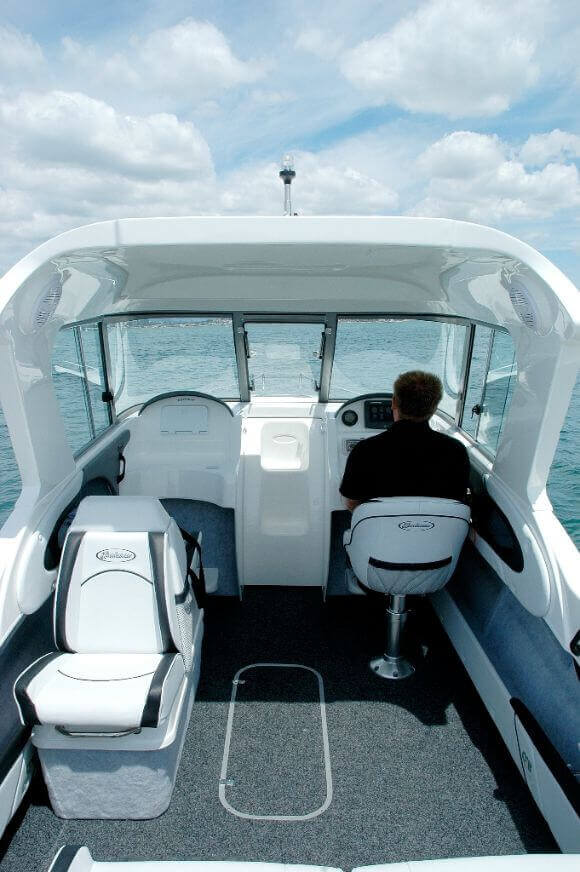
If you are still looking for more storage there is plenty of room under the seating, both behind and within the removable rear bench seats and the king and queen seats to the port side. The backrests of the rear bench seats also act as the doors for the lockers where the batteries and oil reservoirs are safely stored with room to spare. To the port side of the transom is the walk thru to the boarding platform, which has a stainless ladder.
Resting on a Watercraft twin axle, multi roller trailer, the just over 2000kg rig towed well and although there was only a little wind we experienced no windage problems.
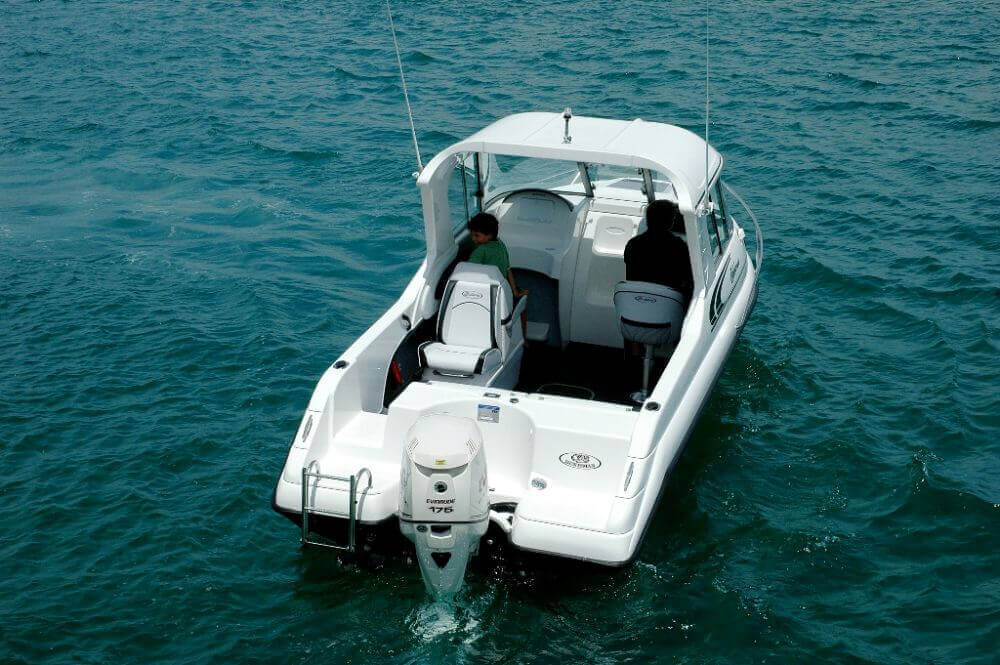
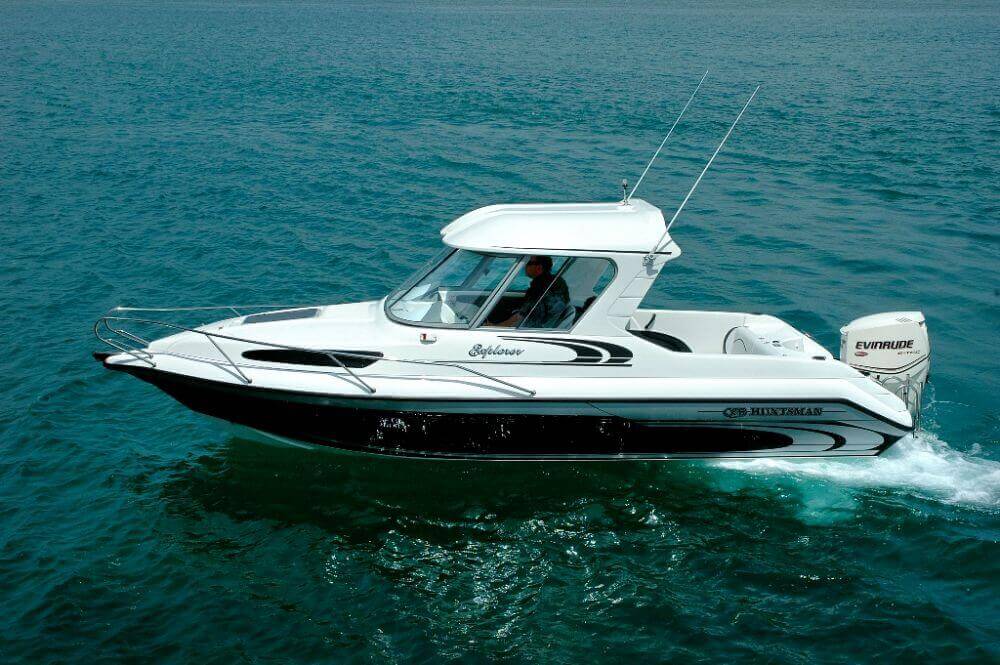
Performance
The CSB Huntsman Explorer was powered by a well matched 175hp Evinrude Etec, which offered plenty of power and good hole shot, popping us up on the plane at just over 2500rpm. At 3500rpm the boat cruised along at a leisurely 26mph, burning 21 litres per hour (1.24 miles on each litre).
The Explorer was fitted with a set of Electrotab trim tabs, which on the moderate day we were out, we hardly needed to alter once the boat was trimmed right. In more blustery conditions, as with most deep V hardtops, the tabs would certainly be worth having fitted, helping to keep the boat riding level.
In the average sea conditions the boat responded well and performed predictably in all sea conditions – heading into it, quarter on, on the beam and in a following sea.
Sharing the same proven hull as the Crusader, the Explorer with a 21-degree variable deadrise and strakes that run parallel along the length of the boat before cutting up into the chine, help to keep the boat dry and give the hull more forward lift.
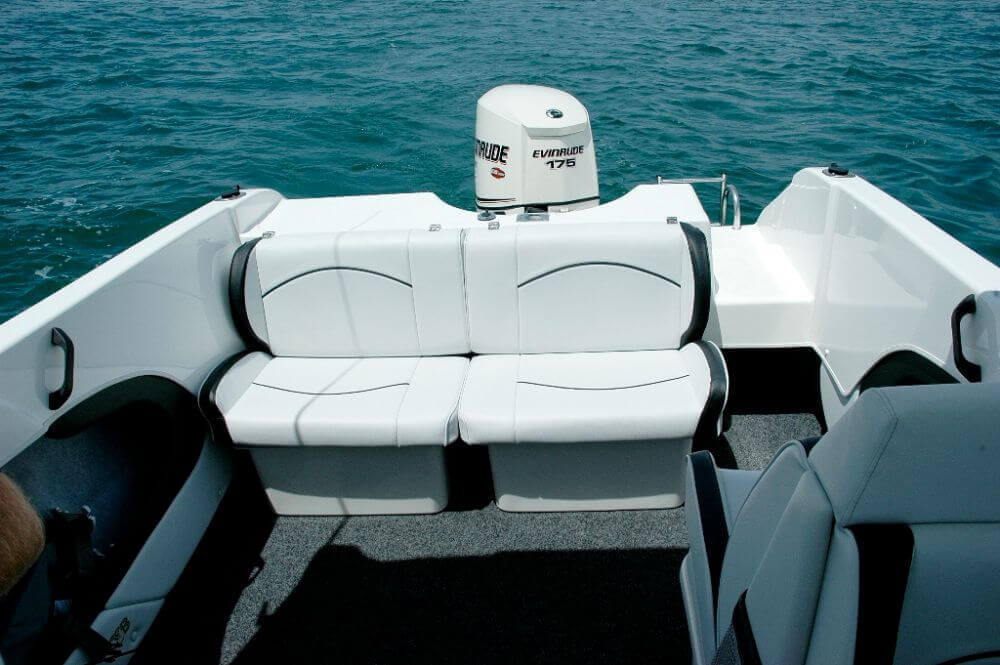
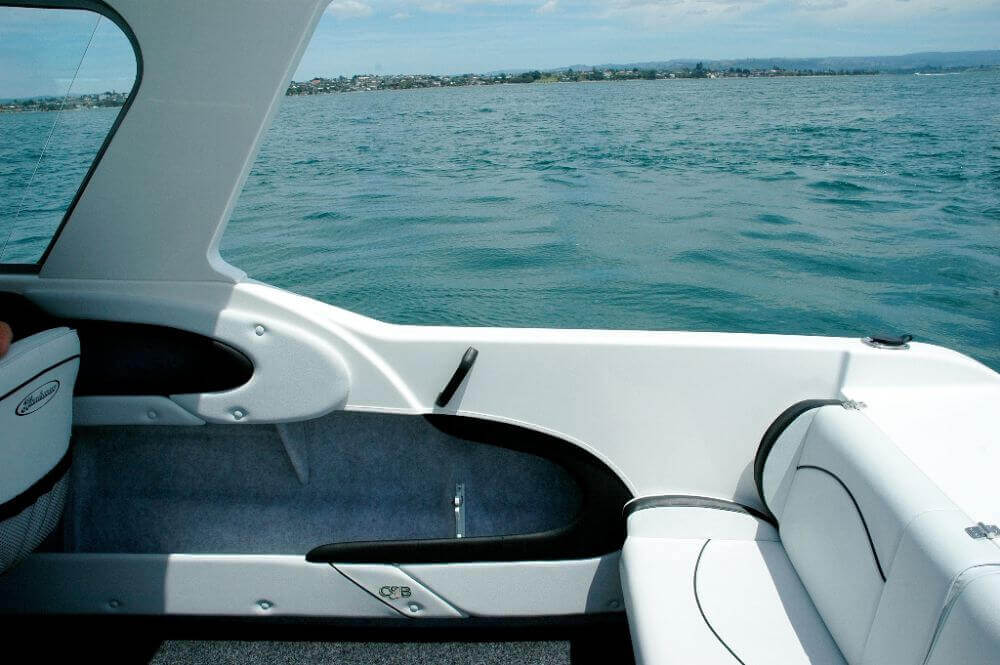
The additional weight and bulk of the hardtop has not overly affected the performance nor trimmed too much off the top end speed of the hardtop model.
Through listening to the market, retailers and existing owners, CSB Huntsman has again further developed on a successful formula, meeting the changing demands of the end user. I am sure those interviewed for their thoughts will not be disappointed with the performance and functionality of this versatile kiwi all-rounder.

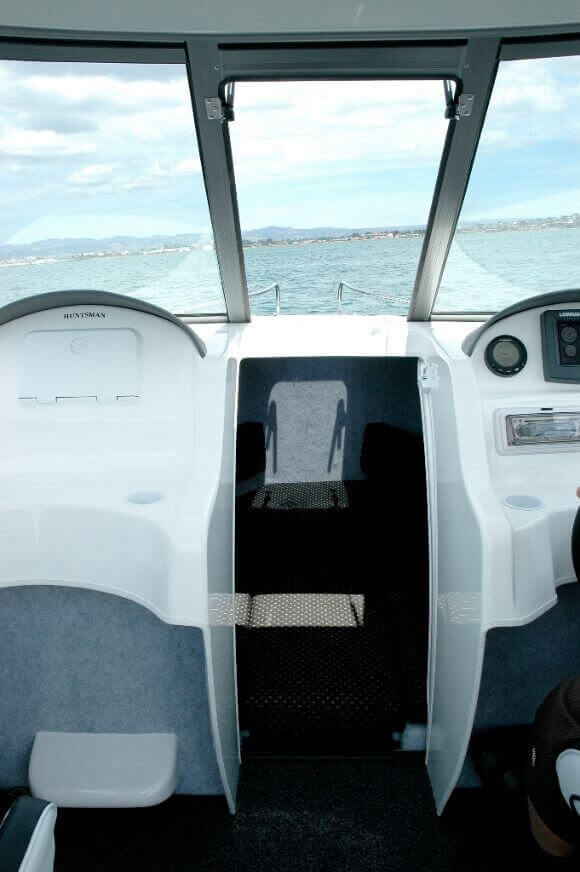
SPECIFICATIONS
- Make: CSB Huntsman
- Model: Explorer
- Price as Tested: $94,995
- Packages from: $89,995
- Designer : Geoff Robinson
- Material: GRP
- Type: Hardtop
- LOA: 7.0m
- LOH: 6.5m
- Beam: 2.4m
- Deadrise: 21 degrees
- Trailerable Weight: 2050kg approx
- Height on Trailer: 2.9m
- Engine Capacity: 150-225hp
- Power Options: Outboard
- Fuel Capacity: 150L




